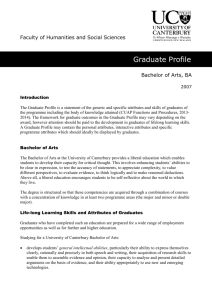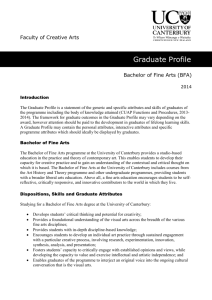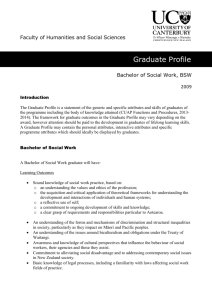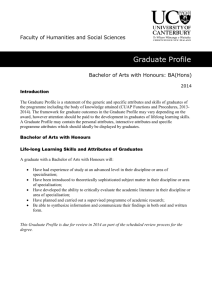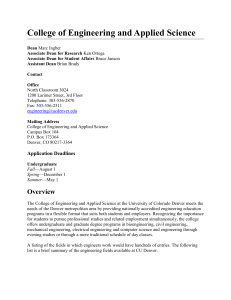The Educational Structure
advertisement
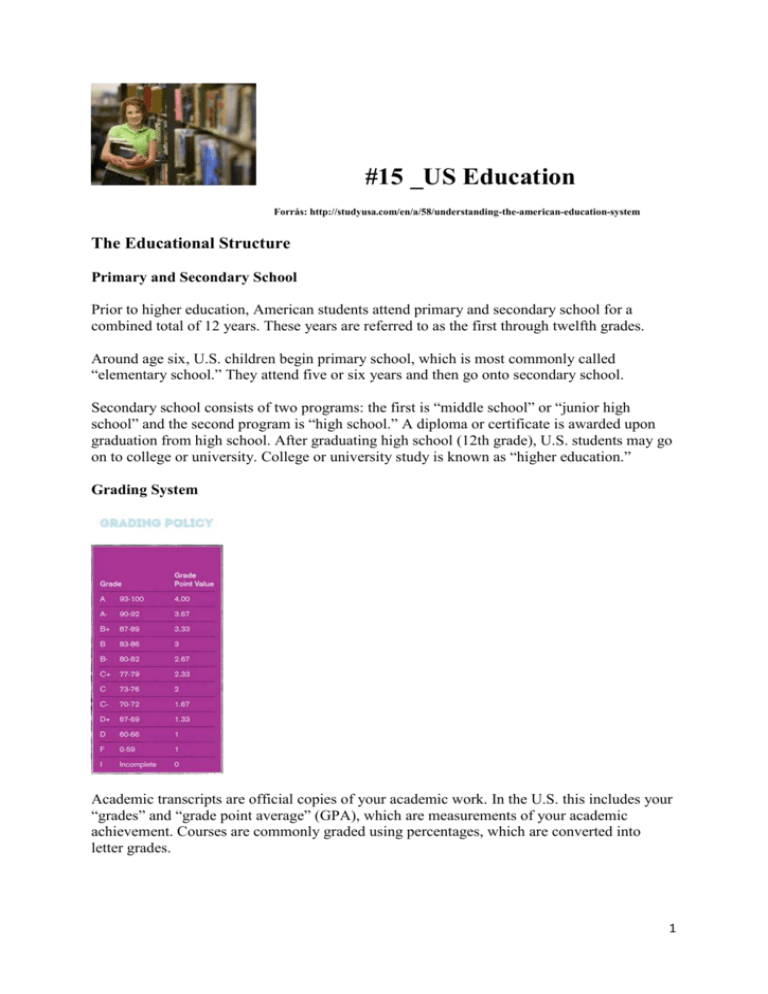
#15 _US Education Forrás: http://studyusa.com/en/a/58/understanding-the-american-education-system The Educational Structure Primary and Secondary School Prior to higher education, American students attend primary and secondary school for a combined total of 12 years. These years are referred to as the first through twelfth grades. Around age six, U.S. children begin primary school, which is most commonly called “elementary school.” They attend five or six years and then go onto secondary school. Secondary school consists of two programs: the first is “middle school” or “junior high school” and the second program is “high school.” A diploma or certificate is awarded upon graduation from high school. After graduating high school (12th grade), U.S. students may go on to college or university. College or university study is known as “higher education.” Grading System Academic transcripts are official copies of your academic work. In the U.S. this includes your “grades” and “grade point average” (GPA), which are measurements of your academic achievement. Courses are commonly graded using percentages, which are converted into letter grades. 1 Academic Year The school calendar usually begins in August or September and continues through May or June. The academic year at many schools is composed of two terms called “semesters.” The U.S. Higher Education System: Levels of Study First Level: Undergraduate A student who is attending a college or university and has not earned a bachelor’s degree, is studying at the undergraduate level. It typically takes about four years to earn a bachelor’s degree. You can either begin your studies in pursuit of a bachelor’s degree at a community college or a four-year university or college. Many students choose to study at a community college in order to complete the first two years of prerequisite courses. They will earn an Associate of Arts (AA) transfer degree and then transfer to a four-year university or college. A “major” is the specific field of study in which your degree is focused. For example, if someone’s major is journalism, they will earn a Bachelor of Arts in Journalism. You will be required to take a certain number of courses in this field in order to meet the degree requirements of your major. You must choose your major at the beginning of your third year of school. A very unique characteristic of the American higher education system is that you can change your major multiple times if you choose. It is extremely common for American students to switch majors at some point in their undergraduate studies. Often, students discover a different field that they excel in or enjoy. The American education system is very flexible. Keep in mind though that switching majors may result in more courses, which means more time and money. Second Level: Graduate in Pursuit of a Master’s Degree Presently, a college or university graduate with a bachelor’s degree may want to seriously think about graduate study in order to enter certain professions or advance their career. This degree is usually mandatory for higher-level positions in library science, engineering, behavioral health and education. Graduate programs in pursuit of a master’s degree typically take one to two years to complete. For example, the MBA (master of business administration) is an extremely popular degree program that takes about two years. Other master’s programs, such as journalism, only take one year. The majority of a master’s program is spent in classroom study and a graduate student must prepare a long research paper called a “master’s thesis” or complete a “master’s project.” Third Level: Graduate in Pursuit of a Doctorate Degree Many graduate schools consider the attainment of a master’s degree the first step towards earning a PhD (doctorate). 2




